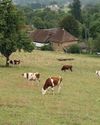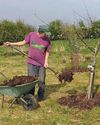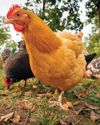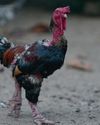
The series so far has described how to create the ideal conditions to ensure your maximum clutch size is achieved. In this fourth instalment we’ll share our tips for supporting the hatch and common problems that could arise.
THE DAYS LEADING UP TO HATCH
In part 3 of this series we recommended putting some extra eggs in an incubator on the same day that the broody hen starts sitting on her eggs so that your clutch sizes are maximised.
Here’s the boring maths part! We aim for 12 chicks per broody hen. Although each of our Orpington hens is capable of supporting up to 15 chicks, they can only safely cover 12 eggs during the incubation period. Given that we have an average hatch rate of approximately 80% we allocate 15 eggs per hen. We give 12 eggs to our broody hens and put 3 eggs in an incubator. This should give us 12 hatched chicks per hen. These numbers relate to our Orpington large fowl birds and may need to be altered for other breeds.
At days 7 and 14 we will candle the eggs, discard any that are not fertile replacing any non-viable eggs under the broody hen with viable eggs from the incubator.
MONITORING THE HATCH
The wonderful thing about working with broody hens to incubate, hatch and raise your chicks is that they take all of the effort out of raising the chicks. They make sure they’re fed, watered and kept warm and dry. Having said that, we would recommend that hatching is monitored closely as broody hens have a mind of their own and it’s at this point that things can go wrong.
This story is from the May 2023 edition of The Country Smallholder.
Start your 7-day Magzter GOLD free trial to access thousands of curated premium stories, and 9,000+ magazines and newspapers.
Already a subscriber ? Sign In
This story is from the May 2023 edition of The Country Smallholder.
Start your 7-day Magzter GOLD free trial to access thousands of curated premium stories, and 9,000+ magazines and newspapers.
Already a subscriber? Sign In

How to Buy a Smallholding in France- Long-time smallholder Lorraine Turnbull looks at the practicalities of moving to rural France
Aspiring smallholders are continually thwarted by the prices of smallholdings and property with land located within the UK. Even the humblest croft in Scotland comes with a substantial price tag and conditions which would make even an adventurous wannabee consider carefully. But all is not lost. For those willing to take the adventure of a lifetime, there is always Europe, and one of the most popular places is France.

Meet the Bournemouth goats and their supporters
These capricious animals are hard workers preserving the natural habitat

Still warm enough to sit outside with a Pizza
Henrietta Balcon uses fresh figs to create an unusual dish at Harvest time

Goodbye to the birds of spring and summer
If you look and listen you might be able to see them preparing to leave says The RSPB

Get ready for the colder weather in the warmth of late summer
Claire Waring advises on doing the best to make sure your colonies survive until next spring

Preparing the Veg Patch for Winter
Lee Senior says, a well-run plot can excitingly continue to produce good quality, tasty, fresh food for much of winter

Time to prepare to plant your orchard
Wade Muggleton, smallholder and author of The Orchard Book, shares his practical experience so you can create your own fruit collection

Choosing feed for the autumn
As autumn approaches, Joanna Palmer, nutritionist at the Smallholder Range, offers advice on choosing the right feed to support your adult birds through their annual moult and ensure your young birds grow and finish well at this time of the year.

Vet advice from an experienced poultry vet
Reflecting on how much the humble hen has helped people world wide plus advice on stopping the scourge of red mite

Give your hens some support
Paul Donovan looks at the right and wrong ways of handling birds